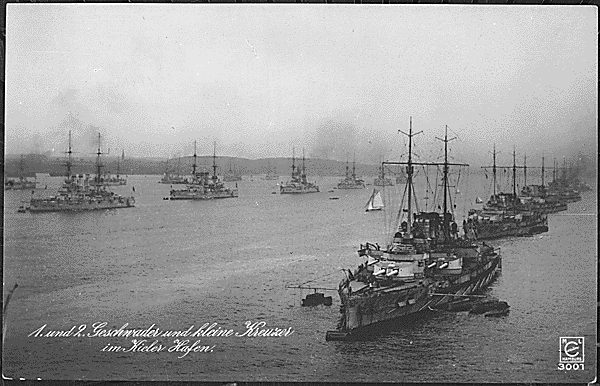Imperial Germany Navy's First and Second Battleship Squadron and Small Cruiser Squadron in Kiel Harbor, Germany
Even before there was, a "Germany", there had been support within the states that would become Germany for building an ocean going navy. Calls for building a "German" navy had come for all quarters, many only tangentially related to military planning; for instance, in the 1830s the prominent German economist Friedrich List had argued for a "German" fleet. Arguments from leading "Germans" such as List provided further grounds for German nationalists seeking to build a greater German challenge to the then status quo dominated by the other great European powers. The domestic clamor for a German fleet only grew with German unification and Germany's strident emergence on the global stage as a colonial power late in the nineteenth century.
The combination of nationalism and militarism inherent in the push for a greater German naval capability quickly found its greatest patron after the German unification; in the form of one Alfred von Tirpitz (1849-1930). After joining the Prussian navy in 1865 Tirpitz had steadily risen through the ranks. By 1897, as the Secretary of State of the Imperial Navy Department, Tirpitz had gained considerable access to Kaiser Wilhelm II - access Tirpitz used to launch the Imperial German Navy on a breathtaking expansion primarily focused on building a modern and powerful battle fleet. An effort leading to the 1897 Navy Bill and its elevation of the battle fleet to the pre-eminent place in German naval policy and as a top instrument of German foreign policy - a place the battle fleet would occupy in German maritime strategy for the next half century.
Picture Courtesy of US National Archives, local identifier no.165-GP-3001


